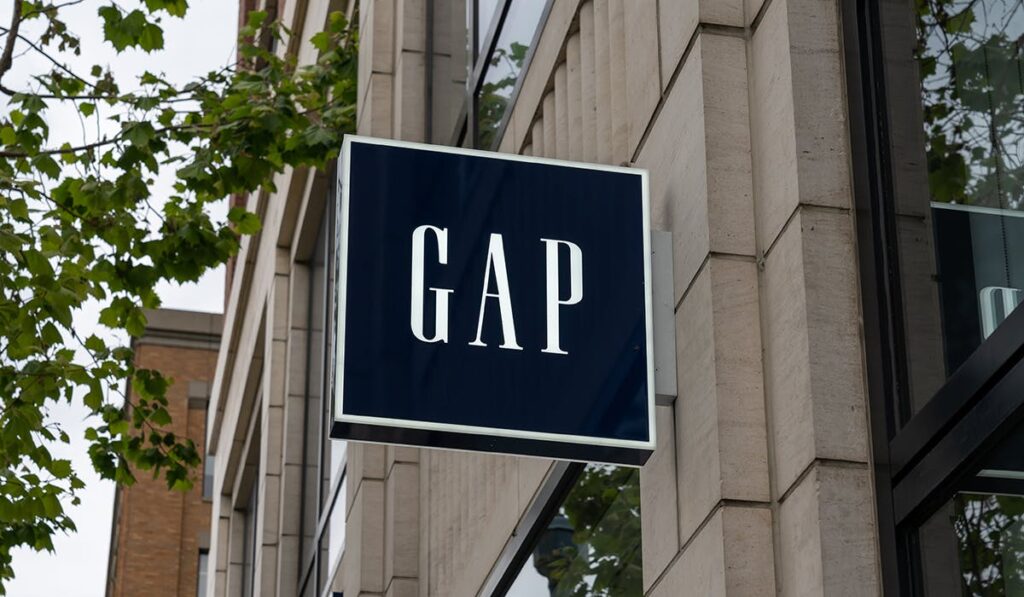
Gap CEO Richard Dickson believes the business “lost the plot” and moved from being a brand storyteller to a “retailer that sells stuff” during the nadir of its fall from grace.
Gap Inc, which consists of its namesake brand, Old Navy, Banana Republic and Athleta, has been on a transformation journey since Dickson joined the business in 2022 – one which identified marketing as the key to reinvigorating its brands.
Speaking at Cannes Lions on Wednesday (18 June), Dickson claimed the business used to be an “incredible storyteller”, but moved away from that to the detriment of its brand health.
 Gap CEO Richard Dickson believes the business “lost the plot” and moved from being a brand storyteller to a “retailer that sells stuff” during the nadir of its fall from grace.
Gap CEO Richard Dickson believes the business “lost the plot” and moved from being a brand storyteller to a “retailer that sells stuff” during the nadir of its fall from grace.
Gap Inc, which consists of its namesake brand, Old Navy, Banana Republic and Athleta, has been on a transformation journey since Dickson joined the business in 2022 – one which identified marketing as the key to reinvigorating its brands.
Speaking at Cannes Lions on Wednesday (18 June), Dickson claimed the business used to be an “incredible storyteller”, but moved away from that to the detriment of its brand health.
“We lost the plot because we moved from being a brand storyteller to a retailer that sold stuff and consumers didn’t feel what Gap was about,” he said. “We needed to get our vibe back.”
Since then the firm has introduced a new marketing playbook focused on five key areas: purpose, product, relevance, experience and execution. Dickson said there is no “secret sauce” and that its playbook is built on a “framework and methodology”, with Gap identifying the reason it exists and sells products on that basis.
“When you have the right purpose and the right product you can then connect that into cultural conversation that creates relevance,” he said.
The Gap CEO explained the brands had “high awareness” in terms of recognition, but not a lot of connection to a cultural conversation.
“You can’t drive revenue without relevance,” he argued.
In the search for greater relevance, Gap started looking closer at how it was talking to consumers and whether it was turning up in the right places. The team also looked to the past for inspiration, examining the “methodology” that made the brand great. While they “celebrated and admired” this past work, the team knew they had to “reshape that work to be relevant today”.
“We’re starting to show up in a cultural conversation,” he said. “Our media mix model has changed dramatically. Our team will tell you it needs to continue to be even more dramatic, which is very exciting, and we need to move at the speed of culture.”
Gap pledges to ‘up its game’ on marketing amid effectiveness push
Dickson believes that in order to do that the brand needs to learn to be “comfortable with being uncomfortable”. He joked that in that context they are uncomfortable “most of the time”, but that it’s his job to let the team make the odd mistake.
“We live in a world of uncertainty, that’s for certain, so unless we all feel comfortable trying and swinging, and missing a few times, we’re never going to break through and solve problems,” he added.
The results for Gap have been impressive, with Dickson claiming search traffic to the site is up 13%. The firm has seen “double digit increases” in Gen Z shoppers, while still appealing to its core consumer of “Gen X and the Baby Boomers”.
He notes the brand is also “engaging” with a millennial audience in a much more pronounced way, which is “part of the heritage” of Gap given the company’s name derives from “bridging the generation gap”.
Dickson once complained Gap’s marketing had become “very, very tactical”, with an overreliance on performance causing the firm to relinquish its hard won brand equity.
While he acknowledged the business is a public company and that means operating “quarter to quarter” – which has its benefits as a check in on progress – Dickson doesn’t want Gap to slip back into a position where it “compromises” the brand vision in pursuit of short-term gains.
His role is to make those decisions on what is “right or wrong” for the brand, so it can perform and “transform”, and leave the business in a better place than when he found it.
“In order to do that, you have to really remain true to the brand vision on a daily basis and not get distracted with the short term,” he said. “We believe the best days for Gap Inc are ahead of us.”


